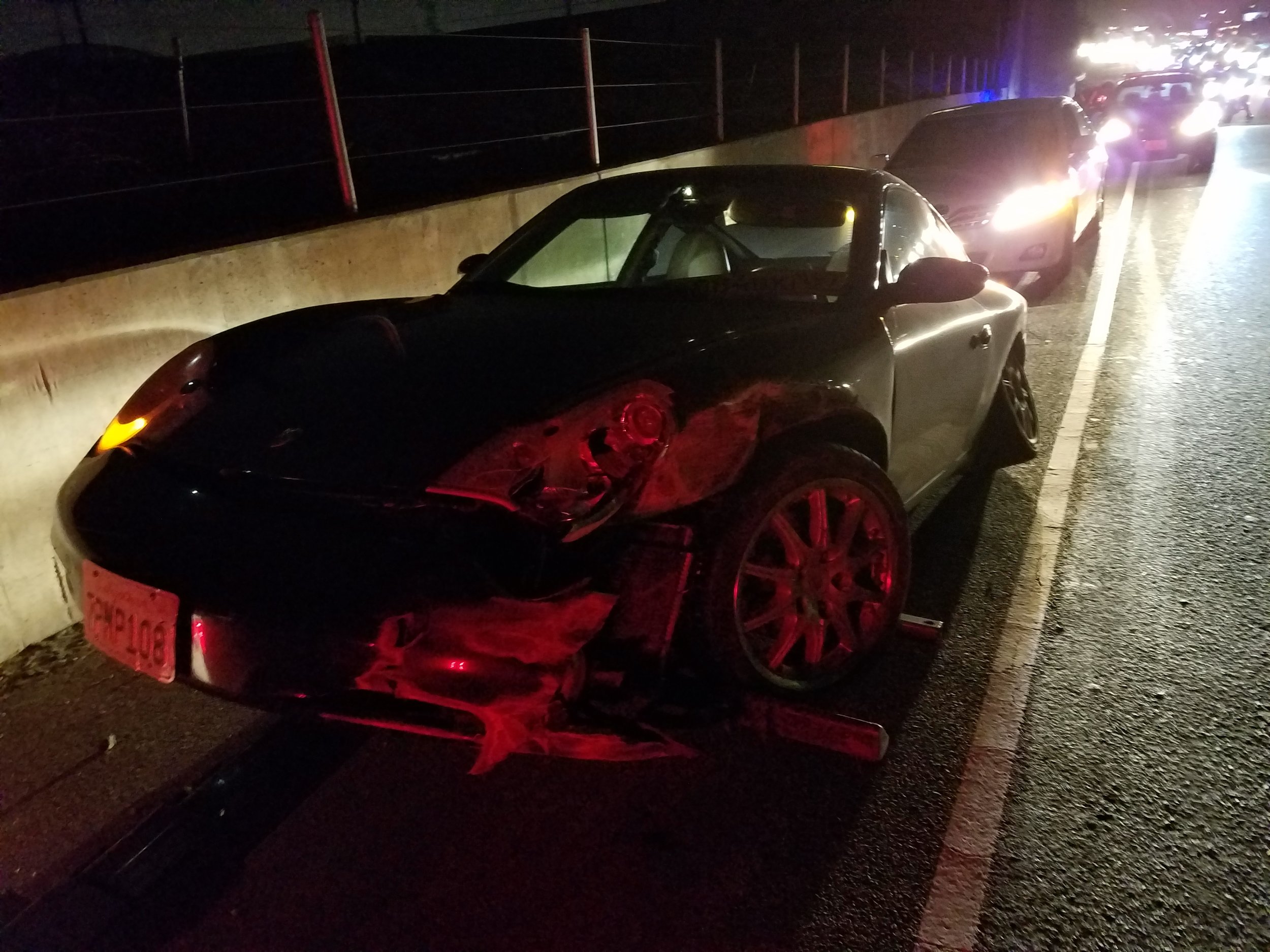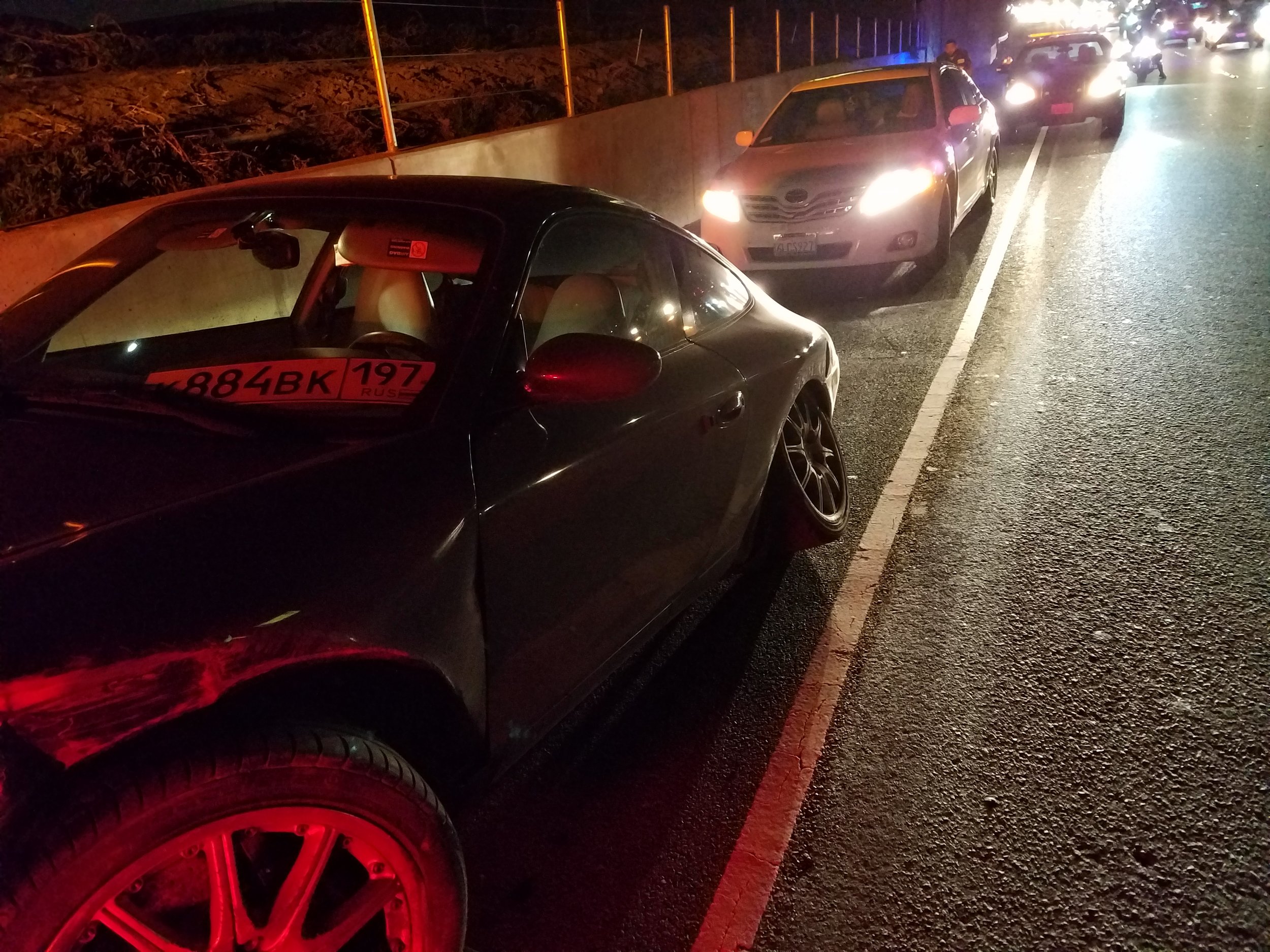In hindsight, I should have spent more than 20 minutes between seeing the car, and waiting in the main lounge to get approved for a loan. I should have also dug a little deeper into the car's past before purchasing it, in order to prevent future headaches. In this article, I will reveal all the mistakes I made when purchasing the car, to prevent you from making the same ones. In addition, I will discuss what it's like to own the 996, and by own I do not mean turning it into a garage queen, but rather truly own and drive the car as it was meant to be.
I spotted the car on CarGurus in the winter of 2015, and a couple of months later, I found myself in front of the dealership that was selling it. I had a simple plan on my mind- look at the car, test drive it, and get an idea of whether or not I even want it. I spotted it immediately, and noticed that the paint needed correction, and that the headlights have been recently restored. I also noticed that the tires were mismatched front to rear, with fronts being Kumhos, and the rears being Sumitomos. The price was steep, at 22,9something, but frankly I was too preoccupied picturing myself shoving a Recaro Pole Position seat in the driver's side and taking it for a spin around Buttonwillow's 13CW configuration. Eventually, I got into the car to test drive it, and noted a few more things; it had a loud exhaust (later discovered to have had muffler "deletes" installed at some point), it didn't go straight, and the steering wheel vibrated at higher speeds. I looked under the car briefly, and noticed no damage, hence I brushed it off as a "poor alignment/tires needing to be balanced" type of issue. What I should have done was take the car back to TRE, set it on a rack for a PPI, and check every single thing from the torque on the wheel bolts, to the quality of the brake fluid. Only then, I would have learned that my driver side front wheel is bent, causing the shake. The PPI would have allowed me to play with the price, as there was at least $4,000 worth of work to be done on the car.
Some little things to know before buying a 996.
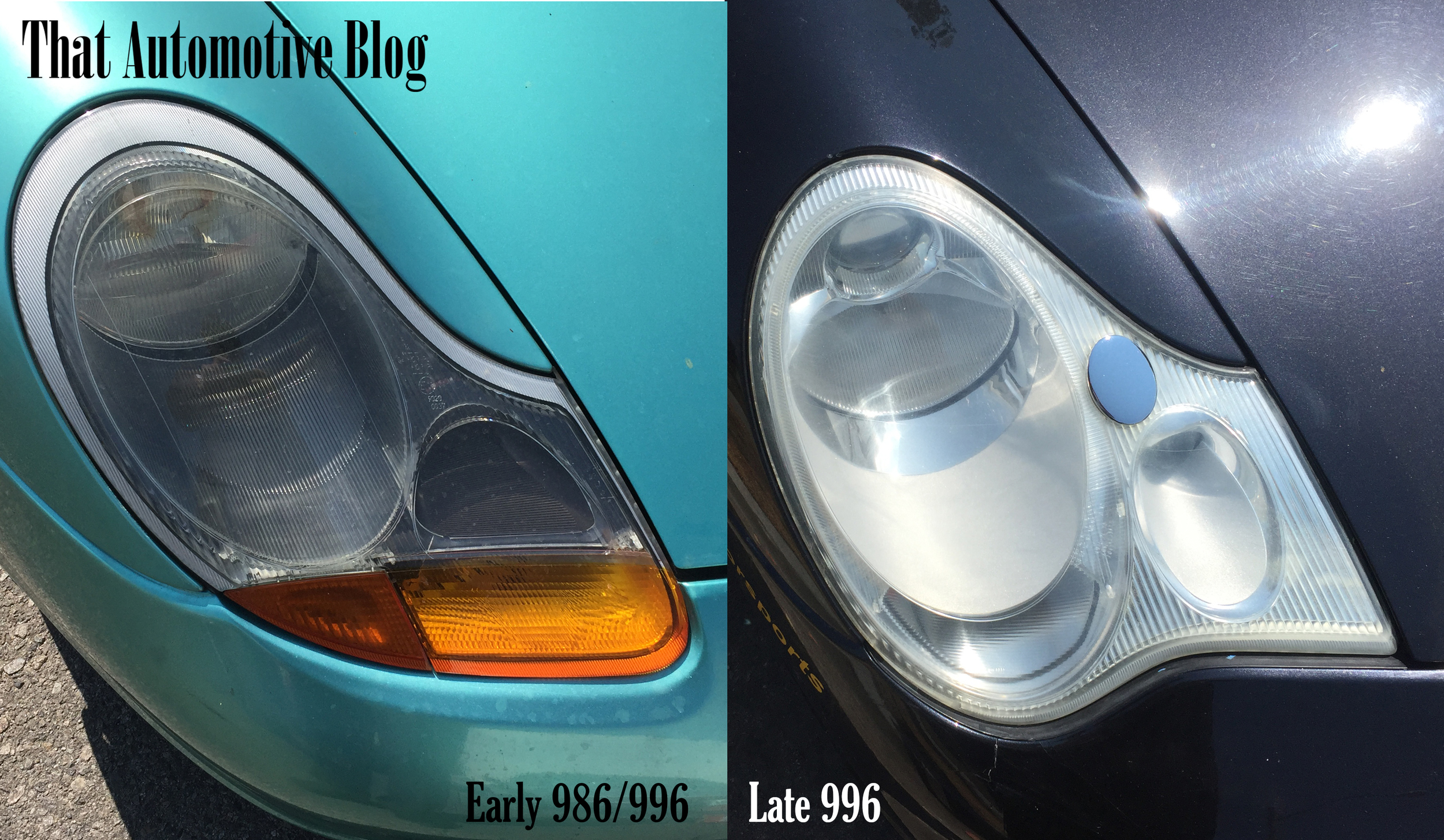
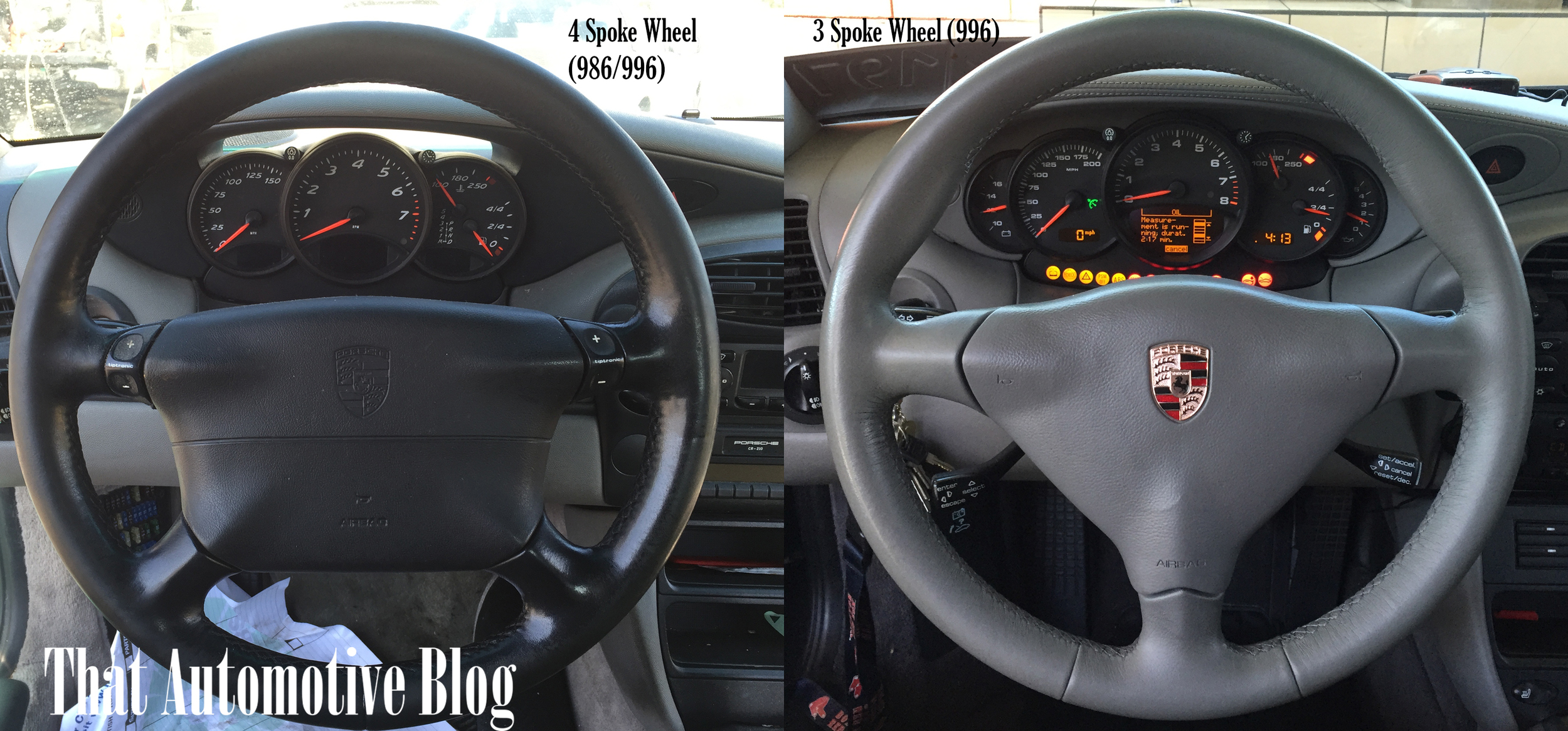
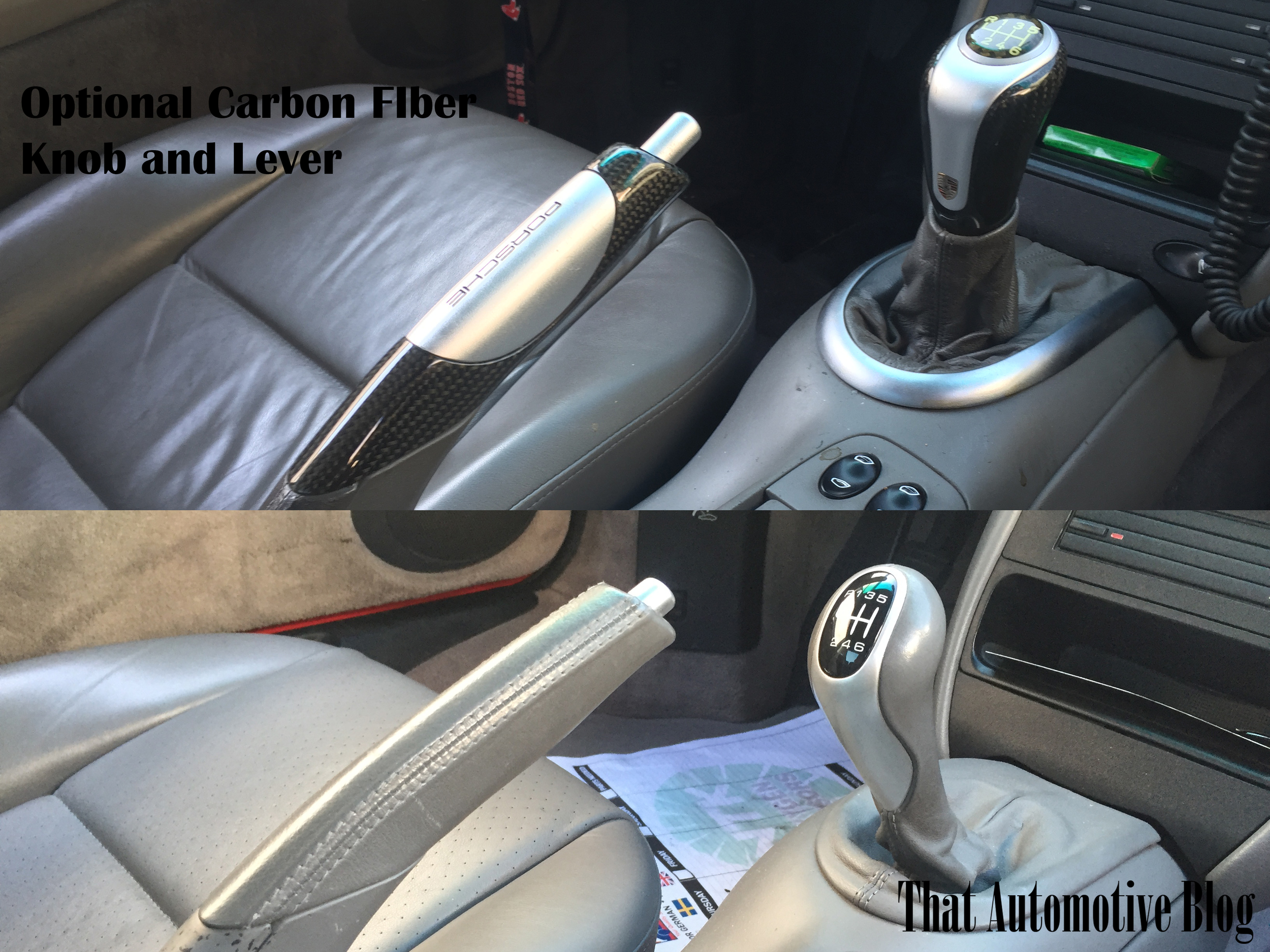
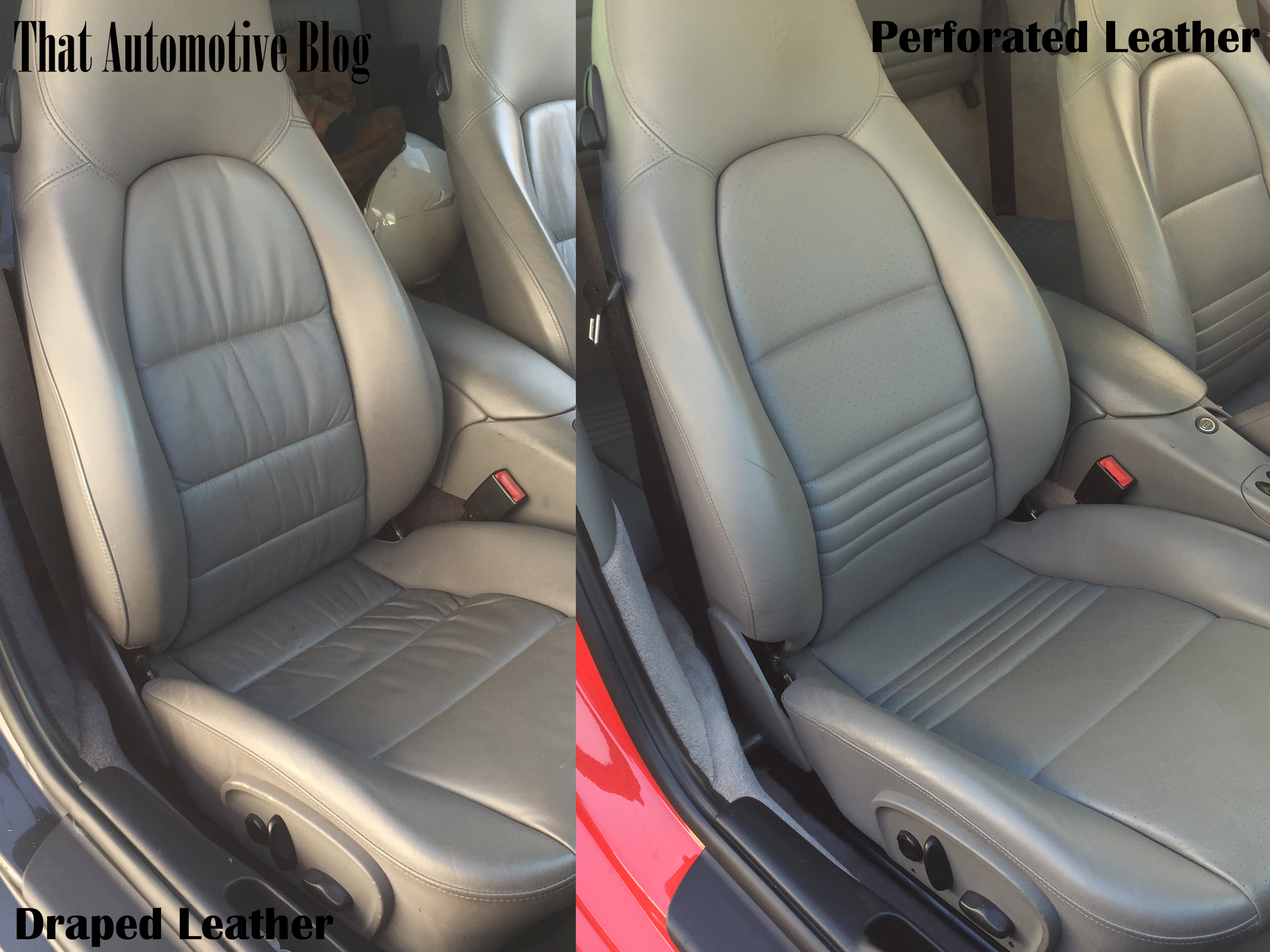
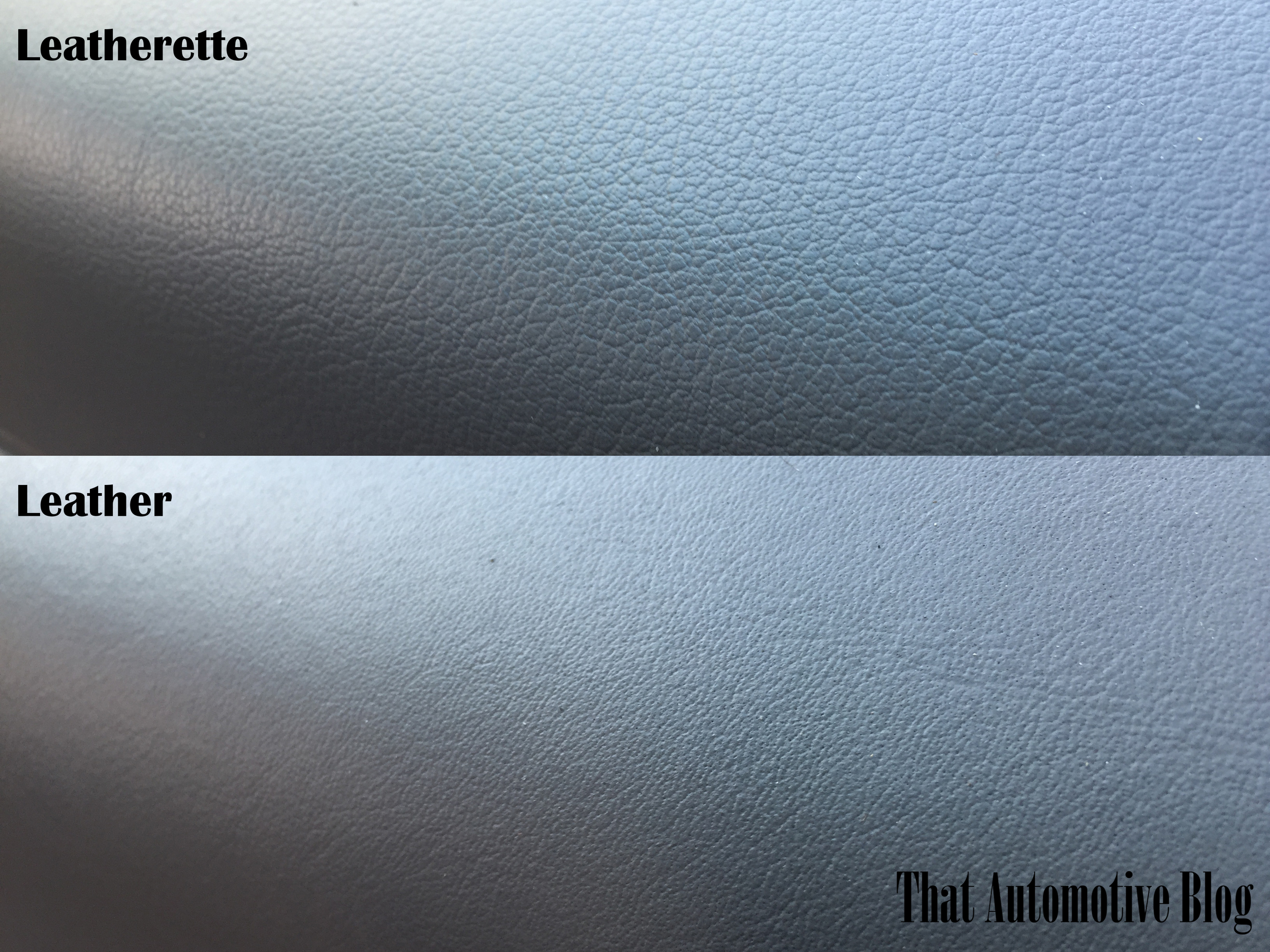
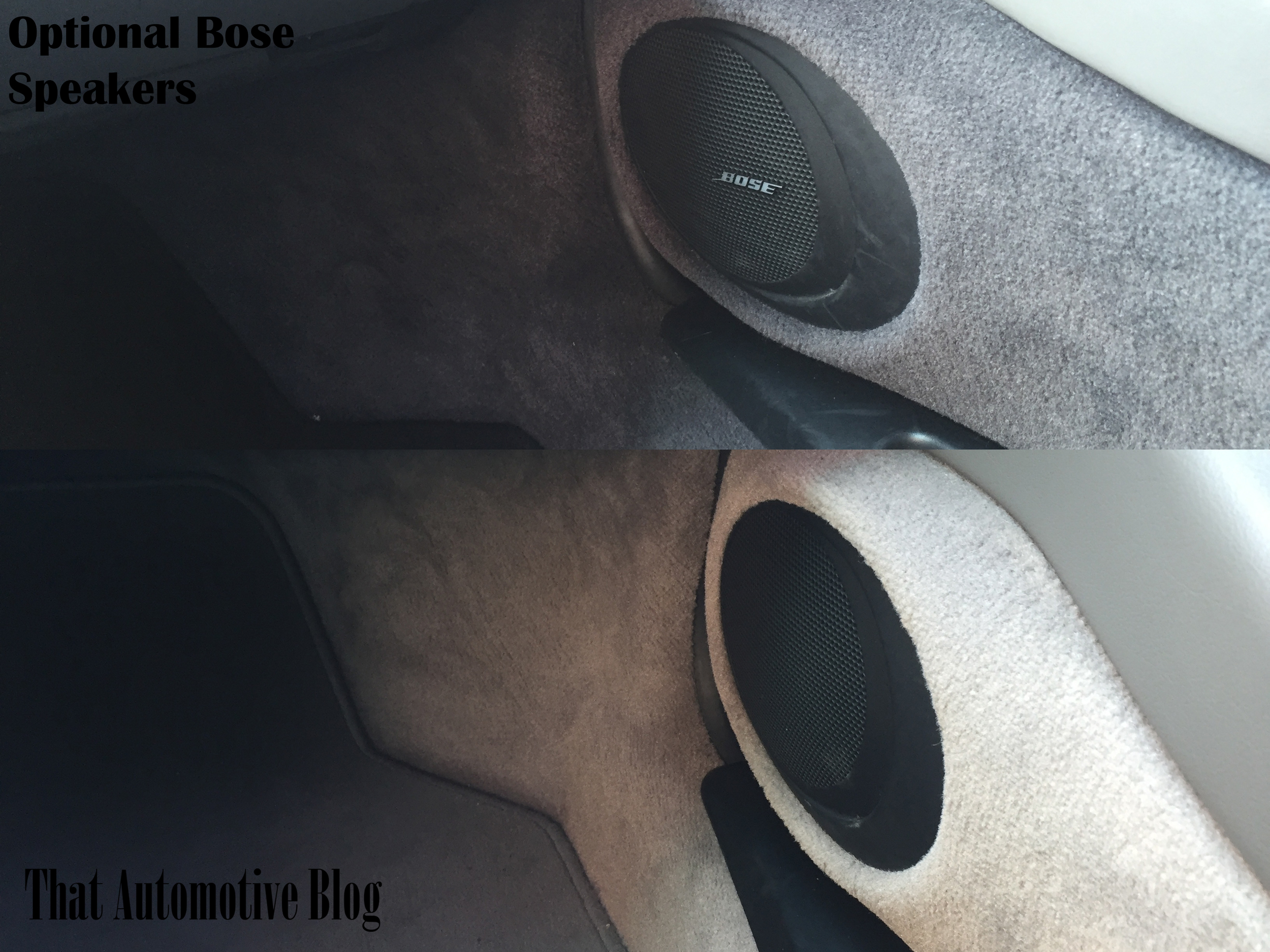
In 1997, Porsche released the 996 as the successor to the 993. Its shared its looks with the Boxster, and the new method of cooling using water was not welcomed among the enthusiasts, even considered to be blasphemy by some. Where the 964, and the 993 were over-engineered to a point of near bankruptcy for Porsche, the 996 was a simpler car, and was easier to work on. The early model (1997-2001) featured a 3.4L M96 engine, while the later model had the displacement increased to 3.6L. There was a number of options available for these cars, and whereas I got very lucky with mine, I would prefer to make sure that the reader knows about them before buying the car, because you may not be so lucky otherwise. The car was offered in wheel sizes ranging from 17" to 19", and tire section width as wide as 295 on Turbo versions. The Carreras did not come with a factory installed limited slip differential, so do keep an eye out to see if your car has this option. In addition, do look out for the leatherette interiors. There's nothing wrong with them, but often times the used car dealerships or the private seller will not mention anything (or just won't know any better), and charge you as much for the car as they would have if it had the leather interior. Thankfully, there's a way to tell apart the two (at least for those of us who otherwise don't care to know what the minor differences in leather feel like); the cars with real leather interiors have a different pattern on the leather material as seen in the photos in the gallery above. Furthermore, the upper dash piece has French stitching running along the edge, which holds the two leather pieces together. Some cars have what is known as the "full leather interior" option, which is exactly what it sounds like - leather can be found everywhere, including the pillars, door panels, and even the rear seats. The steering wheels changed from the 3.4 to 3.6, with the newer cars featuring an all new three-spoke wheel, whilst the old ones had a carry-over four-spoke from a 993. The three-spoke wheel was offered in different styles depending on the model of the car. Also, keep an eye out for cars with a factory "sunroof-delete", as these are very rare, and since Porsche loves to charge more for less, this was not a zero-cost option. There are quite a few advantages to owning a 996 with no sunroof; it will weigh less, and will have a lower center of gravity, allowing for faster lap times. Let's face it, however; unless you last name is Henzler, or Said, or someone of equal status, I doubt you will be able to tell the difference.
"This car was supposed to have been my daily driver, and within a week, I had already spent almost $3000 on it. "
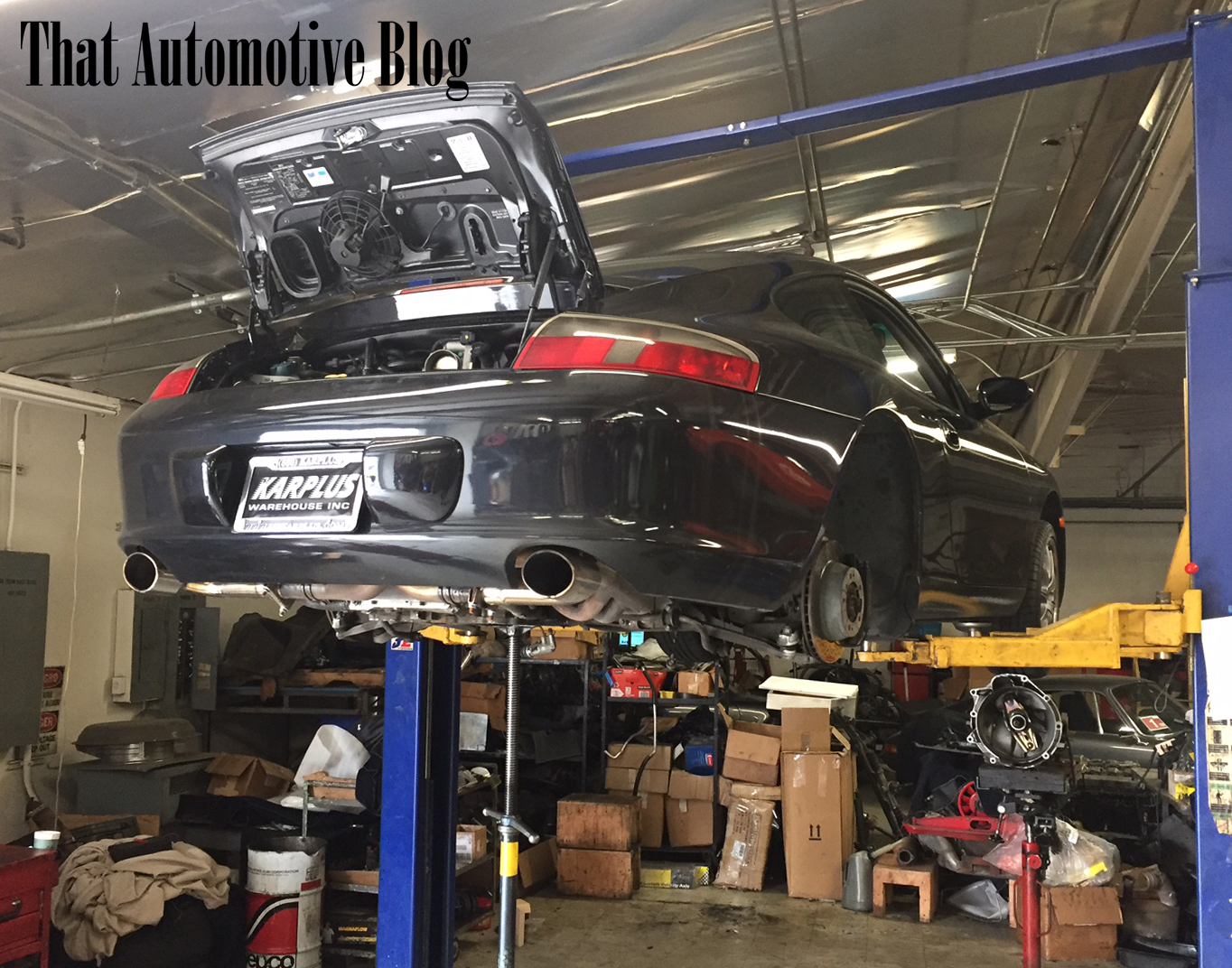
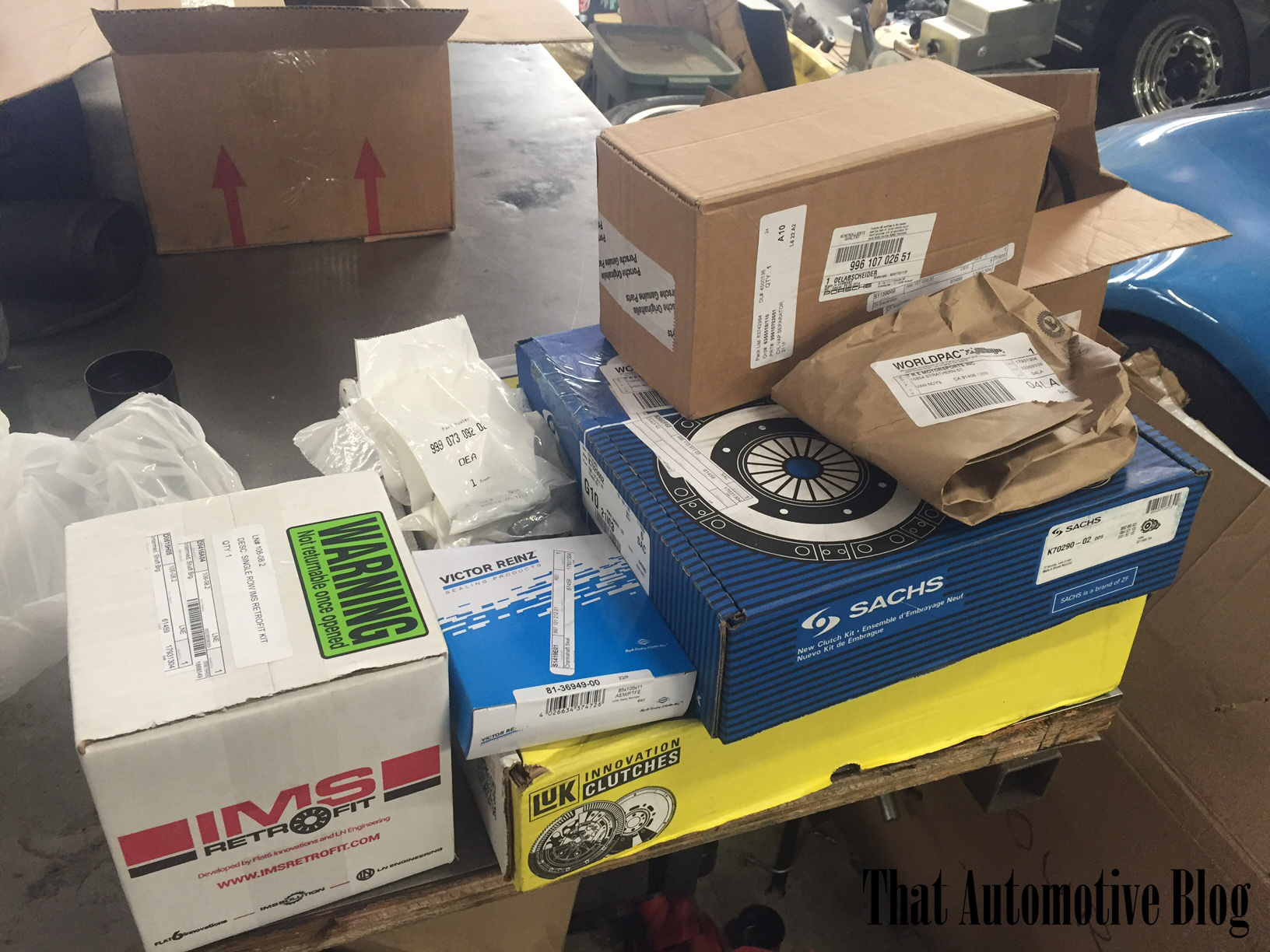
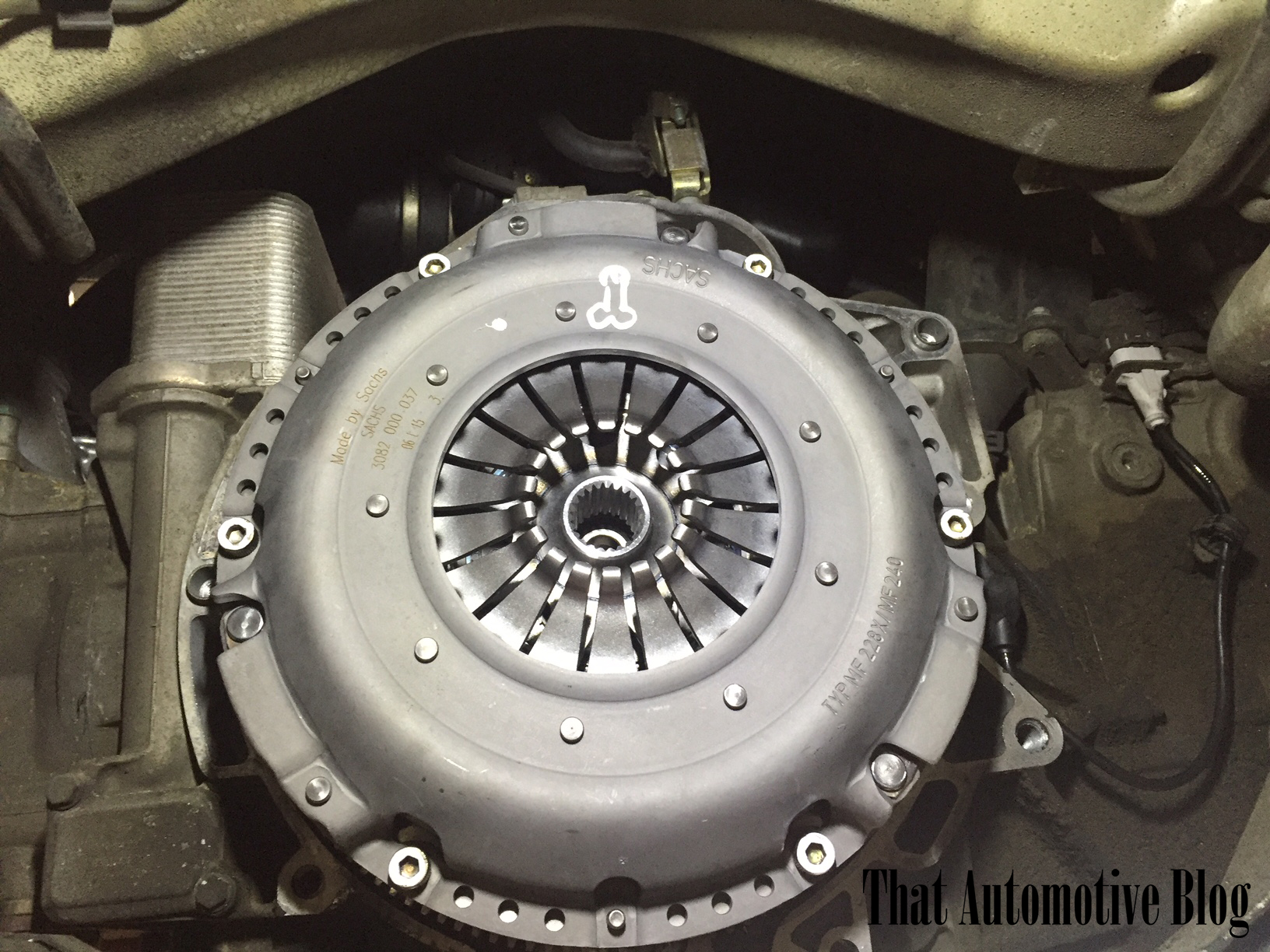
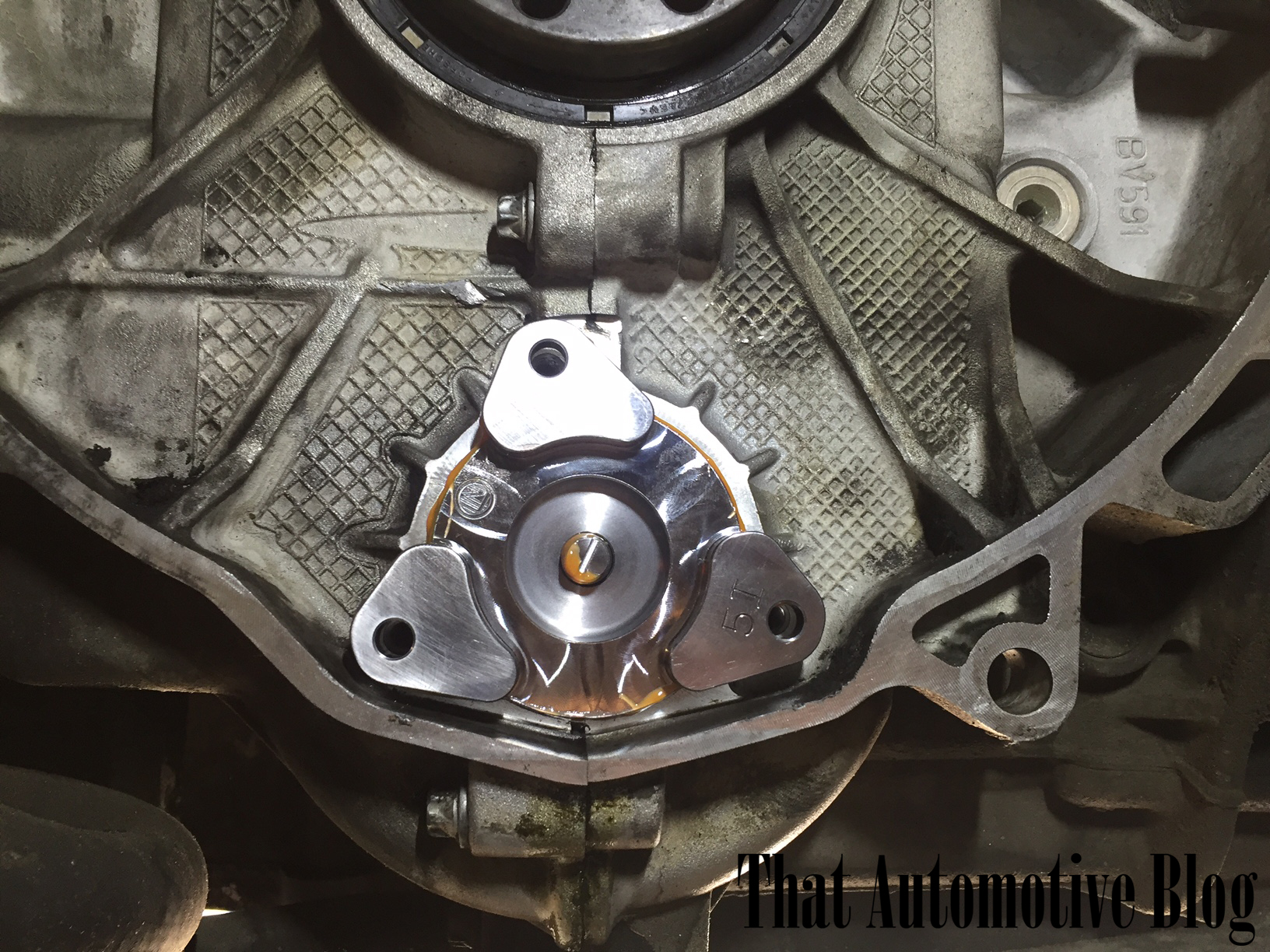
Back to the whole conversation about how I should not have rushed with the purchase- a week after the purchase, the car was put on the rack. I checked for any signs of leakage, bushing and ball joint wear, brake pad wear, and all the usual. Then it was time to remove the transmission, and perform a common service for 986/996 cars- IMS bearing retrofit. Now here's where the 986/996 cars outshine 987/997 cars- in order to perform this service on the later cars, you will have to remove the engine out of the car, and split the case. The later version of the 997 (also known as the 997.2) feature a whole new engine unit, which did not require the IMS bearing service. For my 996, I went with the LN engineering kit, and did the job with a friend in around 8 hours. Since I was so deep into the repairs, I decided to do the flywheel, clutch, crank sensor, and the rear main seal. Looking back at it, I didn't have to do the flywheel, and instead, I should have done the oil separator. In order for the oil separator to be serviced, the transmission has to come out, and shortly after performing the IMS service, my oil separator started to give. Yet another "do as I say, not as I do" moment. In addition, I should have explored more aftermarket options for a single-mass flywheel, because the stock dual mass is way too damn heavy. Upon removal of the original bearing, it was clear that Porsche serviced it at some point, and replaced it with another factory one, meaning the service was basically a waste of time. This car was supposed to have been my daily driver, and within a week, I had already spent almost $3000 on it.
Before I go on, let me make this clear- even though this car is called a 911, it’s nowhere near the same as the original 911s. I know this, because I work on 911s, and they were made between 1964 and 1989. Then came the 964, and then the 993, and even though both were similar to the 911, they were not based on the 911 chassis. It's fine to call them 911, but don’t confuse the different iterations with the original car. Is there some of the 911 spirit in this car? Absolutely, but none of the attention to detail. History time: When Porsche released the 964, it took a serious toll on its cash flow, as they essentially re-did the entire car. Even though it looked similar to the 911, it was almost as different from it as the 991 was different from the 997. The 993 did not help either, and Porsche desperately needed a car that would dig them out of this pit of financial distress. The accounting department stepped in, and called on Toyota to help make the assembly line more efficient. Toyota was not the only Japanese company that helped make the 986 and the 996. According to an insider source, Subaru took on the task of building the M96 engines, making the 986 and the 996 C2, C4, and the C4S essentially a GT86 that was designed by Porsche, and I'm more than o.k. with that.
What I'm not so o.k. with, however, is the build quality. Look, the interior is crap for a car with a Porsche badge. I mean, how did they get away with the cheap plastics and all the rattles? If I press the window switch too hard, it will fall right through the center console. The e-brake button launches into space if you yank on the lever too aggressively. The paint on the plastics rubs off with little effort, and I even had to physically melt the sunroof switch to the bezel after finding out the cost for a replacement bezel (again, because the button went right through its bracket). If the stereo is thumping too hard, the whole thing sounds like a wooden boat trying to cross the Atlantic in the middle of a storm. If you hang too many items on the clothes hanger, it will literally just fall off. I mean, this is not a Mitsubishi Evo, Porsche had no excuse to skimp out so heavily in the cabin. Unless your car came with the previously mentioned "full leather interior" option, which was not offered until the 996.2 model of the car, chances are you got yourself a Porsche that felt like a Toyota inside. And why does that matter, you say? In part, because when new, this was not a $30,000 4-door saloon, and partly because I know that Porsche could do better, based on the previous iterations of the 911. Back-to-back, a barn kept 911 interior will leave one in awe when compared to the 996 cabin; the individual VDO gauges scattered across the dash- which also serves as a separator between the cabin and the trunk- look and feel much better than the modern bundled units found in the 996. In the earlier cars, up to the 993, almost every part served at least two purposes. Comparing the two, it becomes evident that quality was no longer a priority for Porsche when building the 996, and quantity became the main focus. The engineers simply gave a great deal of leeway to the accountants, mostly because the accountants wanted to avoid another 964-993 situation.
But all this means is that the 996 is just not as cool as the 911- it doesn't mean it's not a good car. It has plenty of horsepower, and it will get you around 285 miles to the tank driving mostly around town. Driving on the highway, you'll manage 400 miles to the tank, peaking around 420 if you stay away from opening the throttle in excess. It's very exciting car, especially when thrown around some cones. As far as factory sports cars go, it's a bit on the soft side, and the front lifts, causing quite a bit of under-steer at some slower corners. Is it the car's fault? Absolutely not, and if anything, it forces the driver to use more finesse when handling the car aggressively. In addition, it also forces the driver to learn to balance the tire pressures accordingly, keeping weight and its distribution in mind, and not dropping the pressures enough to compromise the rigidity of the sidewalls.
At the local auto-cross event, the car exposed my weaknesses as a driver. It can show up just about anyone cocky enough to think that they can tame it on the first go. Just like any 911, when the tail steps out, catching it and then controlling the car throughout the rest of the corner is truly rewarding, although unlike the earlier 911s, the 996 is more tame from the factory. What isn't so great about this car, in my opinion, is the shifter, as it feels a bit sloppy, and could use at least a short throw modification and maybe more aggressive bushings. It's the simple things like the shifter, the steering wheel, and the pedal assembly that connect the driver to the car, and if even one of them does not meet the expectations, it can really cripple the overall driving experience. Thankfully, both the pedal assembly and the three-spoke steering wheel are great, with the pedals being aligned in just the right place for heel-and-toe.
Speaking of pedals, mashing the gas pedal will give you a sensation of endless torque that you simply don't get from other naturally aspirated engines. Torque is everywhere, as evident by the curve on the graph, and power is very linear. The car is equipped with a variable-valve timing system, which is not something you can tell by feel alone (at least nowhere near as pronounced as something like a Honda S2000). It puts down 252 wheel horsepower on a Dyno Dynamics dyno, which is around 289 wheel horsepower on a Dynojet for those of you who like sugar-coated numbers. The engine sounds great, even though as far as engines go, it's nothing to write home about. The M96 has two less cylinders than an LS1, makes less horsepower than an LS1, and yet it manages to be heavier than an LS1. Not to mention, it's not as reliable as an LS1, nor is there anywhere near as much aftermarket support for the M96, as it's basically not worth modifying whatsoever- but god damn does it sound fantastic. More than sounding good, though, it's also very consistent- and not just in how often it can replicate the numbers. Most other engines will have some minor discrepancies between dyno runs, especially after the car heats up a little bit. Power fade becomes more apparent on the graph, as the line past 5000 rpm tends to sag more and more with each run- not the case with this car. Each dyno plot sits on top of the other as if it was traced, and towards the top it seems like the M96 has a little bit more left in it, but that extra bit of performance is locked away by the 7200 rpm rev-limiter. Oh, and did I mention the sound? Hear it for yourselves:
For the same amount of money, there were plenty of other new and used sports cars that I could have purchased. A used 2008 BMW M3 E92 is only a few thousand dollars more expensive, and I'll confidently say without a doubt in my mind that it's the faster car. On the other hand, a brand new ND Miata is around the same price, and even though it is more fun to drive, it isn't quite as rewarding as the 996. Despite it not having much character from the factory, the 996 has a lot more of it than most other sports cars on the market today, and what makes this car so great is the relationship that is built between the car and the driver over the course of ownership. This car can take some time to grow on you, but once it does, you will quickly realize that it's unlike anything that you've ever driven. After owning it for 8 months, I have made up my mind about keeping it. Part of the reason I'm keeping the car is the great potential it has; a good set of Koni shocks and H&R springs, or some Ohlins coilovers, some Bridgestone RE-71s, a proper shifter and a Recaro Pole Position seat can make this car a handful to compete against, even for a 996 GT3 driver. The other bit of why I've decided to keep my 996 is all the memories that were made with this car. I took it to Oregon, drove it in a 4th of July parade, and drove back to southern California with absolutely no issues, getting thumbs up on the way up there, and enjoying the air-conditioned interior. It has proven to be reliable, and more than fun enough for someone like myself. In the end, I swore to myself that this will be a "daily-driver", and the challenge now is to keep this promise. The most I'll be doing to it is a set of coilovers.... and maybe some nice tires....
4/9/2017 Update.
Well, yesterday was a sad day for this 996. I got rear ended at speed on the freeway (rear ended in LA? Say it ain't so!), and the car was launched into the center divider wall. The front hit first, completely destroying the wheel, tie rods, control arms, and then the car was flung to the back side resulting in the rear quarter hitting the barrier as well. The rear lower control arm is toast, and so is the sway bar mount. The engine developed an oil leak from the impact, but it started just fine. The airbag deployed as expected, and the car performed exceptionally well. None of the glass broke, and I came out unscathed. Until the car goes to a body shop, it's difficult to tell how extensive the damage is, but my guess would be that the car is totaled, especially taking into consideration the damaged engine (which costs about as much as the whole car). My final verdict for this car is this: If you want an awesome sports car that is also somewhat nice, not too expensive, fun to drive, and you don't mind it being more Japanese than German, the 996 C2 is a great buy. It's quick, fun, and safe, and while it's built like crap on the inside, mechanically it is a very good machine. But is it worth spending over 17,000 on one? I would say yes, yes it is. Shoot for around 20 for a properly sorted one, and make sure to get a PPI performed prior to signing any drive-off documents.




